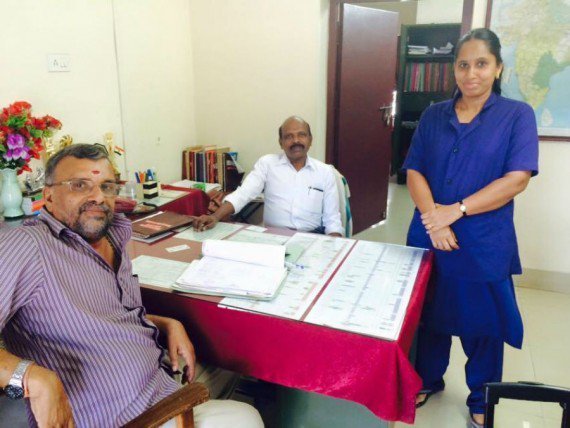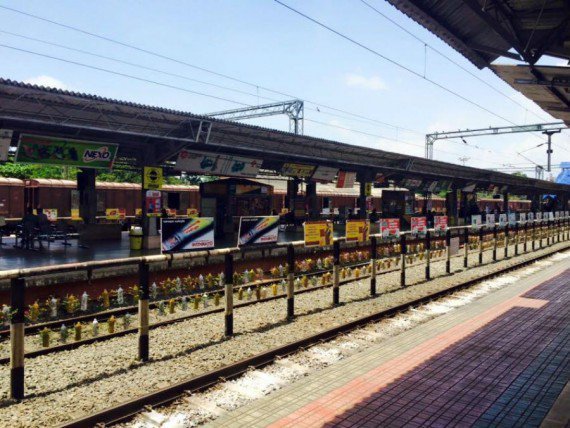When we think of railway stations in India, we generally associate them with plastics littered on the tracks, people rampantly crossing them at the earliest possibility and the dirt and noise that comes with it. However, there are always exceptions.
On her way to Kottayam, Kerala, Neha Venkatesh was crossing the Aluva Railway Station when she saw something remarkable which not only drew her attention but also made her day. She saw a line of plastic bottles decorated with flowers and tied together with a string between the railway lines.
Such an aesthetically innovative idea stirred curiosity in Neha’s mind, and the roadie, having a little time in hand, decided to go and speak to the Station Master about his new beautification idea.

The conversation Neha had with the Station Master, C. Balakrishnan, moved her so much that she was inspired to share it on Facebook. Neha was told that this was not just an idea to make the station premises look better, but hanging bottles of small plants also served a purpose of utility.
The idea was initiated by Mr Arun, the health inspector, and the merit of this idea went beyond its aesthetic beauty to more practical purposes. The plastic bottles were collected off the tracks by the station staff. China Rose was chosen to be planted in them as the plant is low maintenance.

“This was a practically no-cost initiative, and doesn’t require significant extra effort for maintenance. Plus, an interesting way of using bottles strewn away on the tracks,” Neha wrote in her post.
But the most striking fact of the initiative was utility, not beautification. “The most critical impact of this simple intervention blew me away: often, people used to cross railway tracks and that had led to an unprecedented increase in rail accidents; these plants don’t leave much space for people to cross through, thereby encouraging them to use the foot over bridge to cross over to another platform,” Neha shared.
To create beauty out out of waste, and make it useful – this idea is not only novel but also stands apart for its utility. It is a model from which many of our dirty and littered stations can draw inspiration.

















